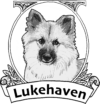History and Origins of the Icelandic Sheepdog
The Icelandic Sheepdog is one of the world’s most ancient and uniquely preserved working breeds. From its Viking‐age arrival on Iceland’s shores to its brush with extinction and triumphant revival, this hardy spitz carries a story as captivating as its character. Below, you’ll find an in-depth look at how the breed developed—genetically, geographically, and culturally—culminating in the happy, healthy companions we know today.
From Wolves to Domestic Dogs
All domestic dogs—including the Icelandic Sheepdog—ultimately descend from grey wolves, but today’s breeds are genetically quite distinct from their wild ancestors.
- Wolf ancestry of domestic dogs:
Mitochondrial DNA analyses comparing 162 wolves and 140 dogs from 67 breeds show that dogs form a single, divergent clade separate from modern wolves. This divergence likely began over 15,000 years ago, with dogs sharing only a few ancestral haplotypes with extant wolf populations. - Ancient wolf introgression in Arctic breeds:
Some northern “arctic” breeds carry a small percentage (1.4 – 27.3 percent) of ancestry from an archaic Siberian wolf lineage (the Taimyr wolf), indicating localized admixture as dogs spread into high latitudes. This introgression helped early dogs adapt to harsh northern environments but represents a minor fraction of their genome today. - Icelandic Sheepdog’s place in the spitz family:
Genetic studies of 56 Icelandic Sheepdogs conducted in the 1980s found they cluster with other Nordic spitz breeds—most closely to the Finnish Karelian Bear Dog—and share no unique wolf-derived markers beyond those common to all domestic dogs. Strict quarantine laws in Iceland since settlement have kept outside dog and wolf genes largely out of the population, so the Icie’s bloodlines reflect ancient spitz stock rather than recent wolf hybridization.- Descent: Icelandic Sheepdogs descend from grey wolves like every domesticated dog breed.
- Genetic similarity: Over thousands of years of selective breeding, they have become genetically distinct from wolves and share only the same foundational haplotypes as other dog breeds.
- No special wolf admixture: Beyond the minor ancient Arctic‐wolf contribution seen in several northern breeds, there’s no evidence that Icelandic Sheepdogs retain unusually high wolf similarity today.
Viking-Era Roots & Genetic Ancestry
- Arrival with Norse Settlers (c. 874 AD): The first Icelandic Sheepdogs came aboard Viking longships, alongside settlers who needed agile, resilient dogs to herd sheep and ponies on their new island home.
- Spitz-Type Heritage: Modern genetic studies place the Icelandic Sheepdog firmly in the Nordic spitz family, closely related to breeds like the Finnish Karelian Bear Dog. These analyses confirm that no significant outside breeds entered Iceland’s population after settlement—thanks to strict quarantine laws dating back to the 10th century.
- Working Traits: From day one, these dogs excelled at herding in rough terrain, using their keen intelligence, stamina, and barking ability to control flocks in open pastures and lava fields alike.
Medieval Exports & Cultural Footprint
- European Aristocracy’s Favorite: By the late Middle Ages, British and Scandinavian nobility prized these rugged dogs. Records from the 1500s–1600s note “Iceland dogs” in English and Danish courtly kennels.
- Literary Mentions: Shakespeare’s Henry V (circa 1599) alludes to the “Iceland dog,” showing the breed’s presence and renown in Elizabethan England.
- Functional and Companion Roles: In Europe, these dogs served both as functional herders in rural estates and as affectionate companions in manorial households.
Near-Extinction & Preservation Challenges
- 10th-Century Culls: A catastrophic famine led Icelandic authorities to cull dogs in order to conserve food for human survivors, decimating early canine populations.
- 19th-Century Tapeworm Laws: A livestock‐devastating tapeworm outbreak prompted a 1869 law limiting each farm to a single dog—dropping the population from tens of thousands to only a few thousand within two decades.
- Disease Outbreaks: Canine distemper, parvovirus, and other epidemics further shrank the gene pool, leaving pure-bred Icelandic Sheepdogs perilously close to disappearing by the early 1900s.
20th-Century Revival & Organized Breeding
- Mark Watson’s Campaign: In the 1950s, English enthusiast Mark Watson discovered the breed’s near-vanished status and began exporting Icelandic Sheepdogs to England and the United States to establish new bloodlines.
- Iceland’s Kennel Club (1969): Veterinary leaders in Iceland formed the Icelandic Kennel Club to document, register, and protect the breed.
- Importation for Genetic Diversity: Breeders like Sigríður Pétursdóttir imported Watson’s foundation dogs back to Iceland, widening the gene pool and fortifying health.
- Formation of DÍF: Deild Íslenska Fjárhundsins, Iceland’s national breed club, was established in 1979 to coordinate breeding standards, health testing, and breed promotion.
International Cooperation & Modern Status
- Icelandic Sheepdog International Cooperation (ISIC, 1996): Breed clubs from Iceland, North America, and Europe united to share pedigrees, health data, and best-practice breeding protocols.
- AKC Recognition (2010): After a sustained campaign, the Icelandic Sheepdog earned full Herding Group status with the American Kennel Club, boosting visibility in the United States.
- Growing—but Rare—Population: Today, roughly hundreds of Icelandic Sheepdogs live in the U.S., while 25,000 exist worldwide. Strict import controls in Iceland preserve the breed’s purity, even as carefully managed exports and breed exchanges ensure healthy genetic diversity abroad.
Why This History Matters
Understanding the Icelandic Sheepdog’s journey—from Viking workhorse to almost‐lost treasure—enriches our appreciation of its resilience, health, and character. Prospective puppy buyers should know that every Icie carries living DNA from adventurous Norse settlers, a testament to centuries of natural selection and conscientious breeding. By choosing a pup from a reputable breeder, you become part of the ongoing story that safeguards one of the world’s most distinctive and loyal herding dogs.
